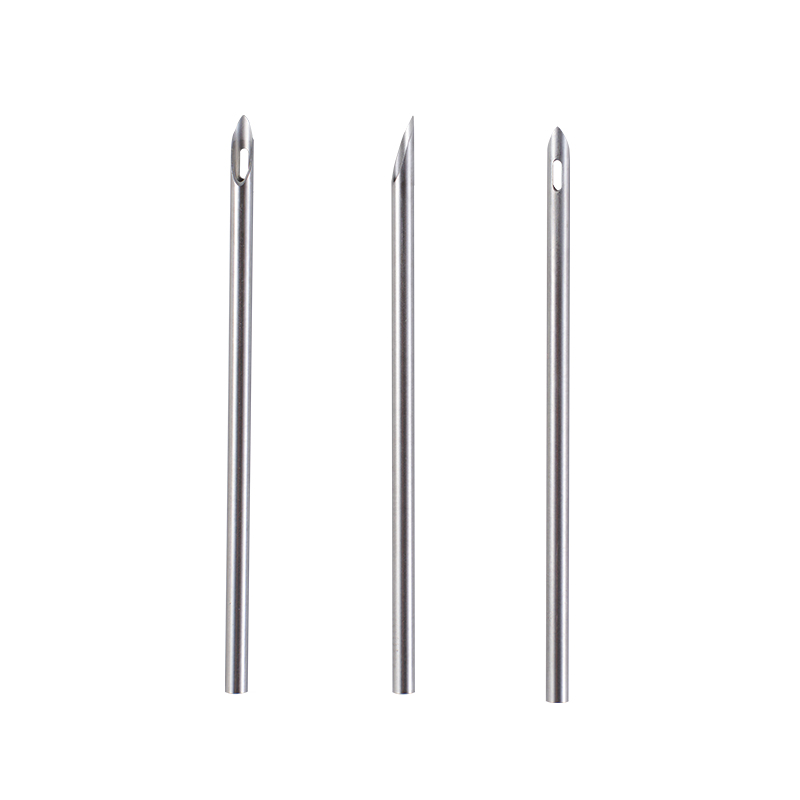+86-0577-86858771
Over the past twenty years, medical instruments have undergone significant changes, driven by advancements in technology, materials, and the growing needs of healthcare providers. Among the many tools that have evolved, needles stand out as some of the more commonly used yet critically important instruments in both human and veterinary medicine. From needles designed specifically for blood collection to veterinary hypodermic needles and the refinement of injection needle tips, the evolution reflects a continuous effort to improve patient care, safety, and efficiency.

The needle for blood collection, also known as a phlebotomy needle, has seen notable improvements in design and materials over the last two decades. Traditionally, blood collection needles were made of stainless steel with a simple bevel tip, adequate for puncturing veins but sometimes causing discomfort or damage to the vessel wall. Newer designs have focused on reducing patient pain and increasing the ease of insertion. Innovations include the refinement of needle bevel angles, resulting in smoother penetration and less tissue trauma. Some needles now feature coatings that reduce friction, making the puncture less painful and reducing the chance of complications like hematomas or bruising. Additionally, safety mechanisms have been integrated into many blood collection needles to prevent accidental needlestick injuries among healthcare workers, a concern that has gained more attention in recent years.
In the realm of veterinary medicine, hypodermic needles have also evolved to meet the specific needs of different animal species and treatment types. Veterinary hypodermic needles must accommodate a wide range of animal sizes—from small pets like rabbits and cats to large livestock such as cattle and horses. Over the last two decades, improvements have been made to create needles that balance strength with flexibility, allowing safe and effective injections in animals with varying skin thickness and muscle density. The variety of gauge sizes and lengths available has expanded, enabling veterinarians to choose the more appropriate needle for the type of injection, whether it be subcutaneous, intramuscular, or intravenous. Moreover, the materials used in veterinary needles have been optimized to withstand the stresses of field conditions, such as exposure to different weather and handling during farm visits, without compromising sharpness or sterility.
Another area that has seen considerable development is the injection needle tip itself. The tip's design plays a crucial role in how the needle interacts with tissue, affecting both patient comfort and the effectiveness of the injection. Over time, manufacturers have experimented with various bevel configurations and surface treatments to achieve smoother insertion and less pain. Some injection needle tips now incorporate multi-faceted bevels that create a sharper edge, facilitating easier penetration. Others use ultra-thin walls to increase the internal diameter while maintaining a fine outer diameter, which allows medication to flow more easily through a smaller needle. These refinements reduce the force needed during injection and the discomfort experienced by patients. In addition, coatings such as silicone or other lubricants have been applied to needle tips to further decrease resistance as the needle passes through the skin.
Beyond the physical design of needles, technological integration has influenced medical instruments broadly. For example, safety-engineered devices have become more common, including needles that retract automatically after use or are shielded to prevent accidental exposure. These features contribute to workplace safety and reduce the risk of infections spreading. In veterinary settings, some hypodermic needles are now part of injection systems designed for repeated or remote dosing, helping to streamline the care of animals in agricultural operations.
While the core function of needles remains straightforward—delivering or withdrawing fluids—the ongoing innovations reflect a careful balance between usability, safety, and comfort. The evolution seen in blood collection needles, veterinary hypodermic needles, and injection needle tips over the last twenty years demonstrates the healthcare industry's responsiveness to both clinical demands and patient experiences. As new materials and manufacturing techniques continue to emerge, it is likely that these instruments will keep improving in subtle but meaningful ways, contributing to better outcomes for patients and healthcare providers alike.
In conclusion, the last two decades have brought gradual yet important enhancements to medical instruments, especially needles. Whether for drawing blood, administering injections to animals, or delivering medicine with small discomfort, these tools have been refined to meet modern healthcare challenges. The progress is not just in creating sharper or thinner needles but in designing instruments that prioritize safety, comfort, and efficiency. This ongoing evolution highlights the intricate blend of science and engineering behind even the simplest-seeming medical devices.
Wenzhou Kangyu Medical TREATMENT
+86-0577-86858771
+86-13957709138
No. 626 Airport Avenue, Longwan District, Wenzhou City, Zhejiang Province, China
Contact Us